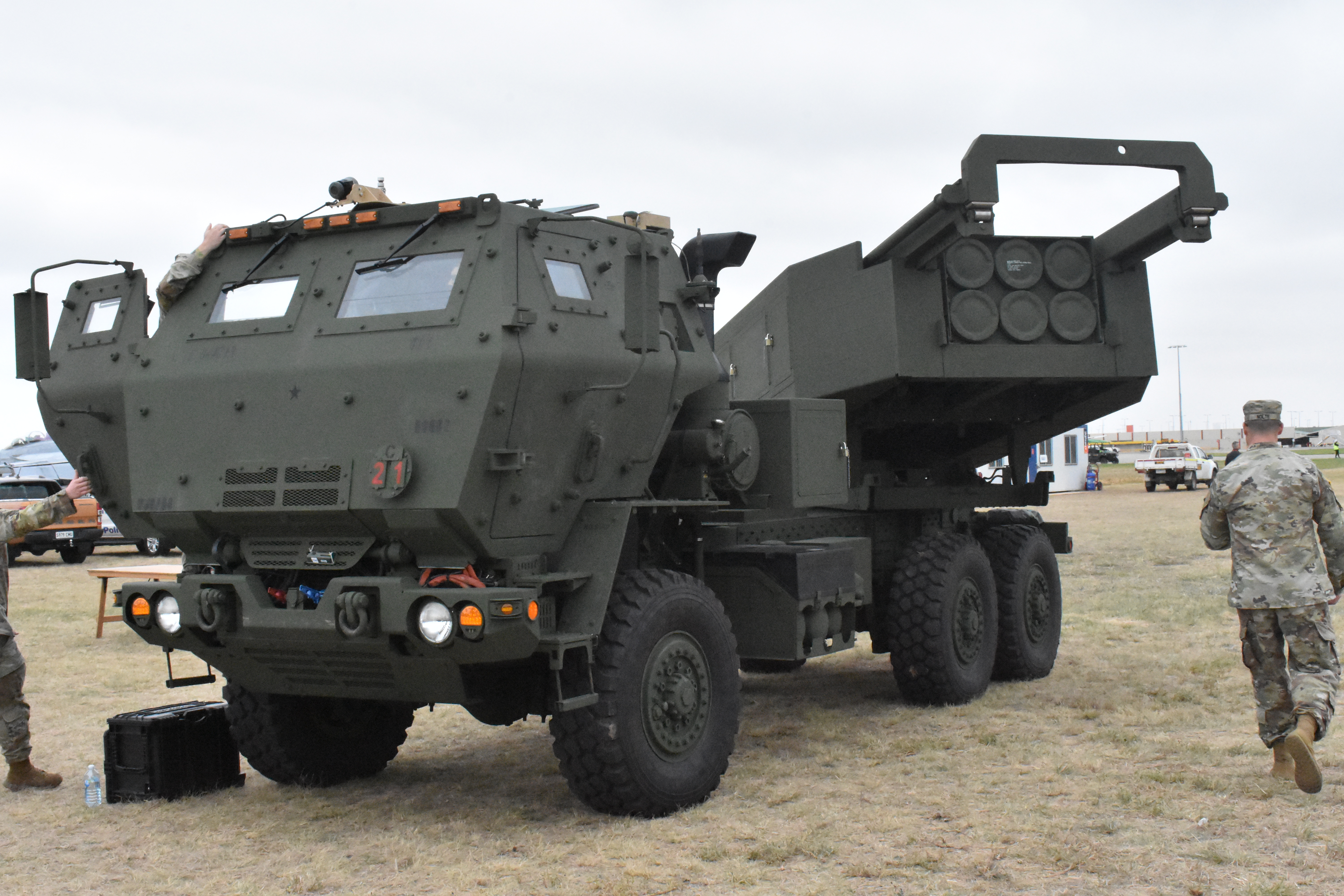The Australian Defence Force definitely has a new favourite toy for the troops with their recent acquisition of 20 HIMARS systems.
The six-wheeled, all-terrain, High Mobility Artillery Rocket System (HIMARS) produced by Lockheed Martin is the first land-based, surface-to-surface missile system acquired for an ADF future long-range strike capability.
It also featured highly on the must-see wishlist for ADF personnel at the Avalon Airshow held in Victoria last week.
A former ADF soldier described the HIMARS as “very exciting” new kit for current serving personnel with better operational tempo and a more accurate, bigger payload.
US Marine Corps former artillery officer and Lockheed Martin international business representative Wayne Harrison said the HIMARS has a smaller silhouette for hiding and uses a medium-sized truck base for better manoeuvrability than larger launchers.
“What makes this system really special is the fact that it can go in the back of the C-130 and C-130s can land in many, many air strips that other bigger planes can’t,” he said.
“The C-130 lands into the wind, while the C-130 is turning around and coming back this way these guys are already firing the HIMARS. Then the C-130 picks it back up, flies into the wind and takes off; that’s the concept. I can give you anecdotal evidence from my unit that we got it down to about six to eight minutes.
“You’re keeping the enemy off balance, they really don’t know where the HIMARS is going to come in, they don’t know where it’s landed and this can get into many, many places that bigger launchers can’t.
“This system is all about expeditionary capability and flying it deep to the flank where maybe the enemy is not expecting a firing mission.”
The ADF is scheduled to receive initial delivery of its 20 vehicles for the Royal Australian starting in 2025 and final operating capability planned for 2029.
The three-man system has significant international notoriety with recent extensive operations in Ukraine and fielding by close neighbour Singapore in their 23rd Battalion Singapore Artillery.
Lockheed Martin enterprise performance vice-president Paula Hartley said more than 550 HIMARS have been delivered around the globe.
“They’re deployed worldwide with about 20 international customers. It has very good reliability, it has about 2 million hours of operating experience,” she said.
“This vehicle would accommodate six guided MLRS, one ATACMS comes or two PrSMs, so it’s a very highly capable system as well. The guided MLRS is about a 70-kilometre missile, ATACMS is 300 kilometres, and the newer PrSM will hit about 400 kilometres.
“(From HIMARS use in Ukraine) we hear it’s highly effective, very precise; both HIMARS itself and the munitions that are launched from it.”
The MGM-140 army tactical missile has a current production line, while pairs of precision strike missile tactical ballistic missiles are still in development by the United States Army and could be available between 2026 to 2027.
Each launcher has either six 227mm guided multiple launch rocket or a single MGM-140 army tactical missile. Unlike other similar vehicles, the launcher features no extendable stabilisers and has a three second wait time between MLRS firing.

Lockheed Martin missiles and fire control business development manager Damien McMahon said production is going to occur in the US, however maintenance in Australia could be located at Edinburgh in South Australia.
“We’re looking at a HIMARS sustainment centre concept with the ADF, to bring all the maintenance components together under one centre to deliver cost savings, parts and storage concepts for the Commonwealth,” he said.
“We’re also working with small to medium enterprises here in Australia, understanding what capabilities Australia has with rocket motor development, propulsion technologies, rocketry and missile control systems, and also with explosives and warhead development.
“I don’t know what the Commonwealth’s plans and intentions are, however … the Commonwealth has asked us to help provide them some advice so that they can develop their understanding of whether this is something that the Guided Weapons and Explosive Ordnance enterprise would like to do.”








